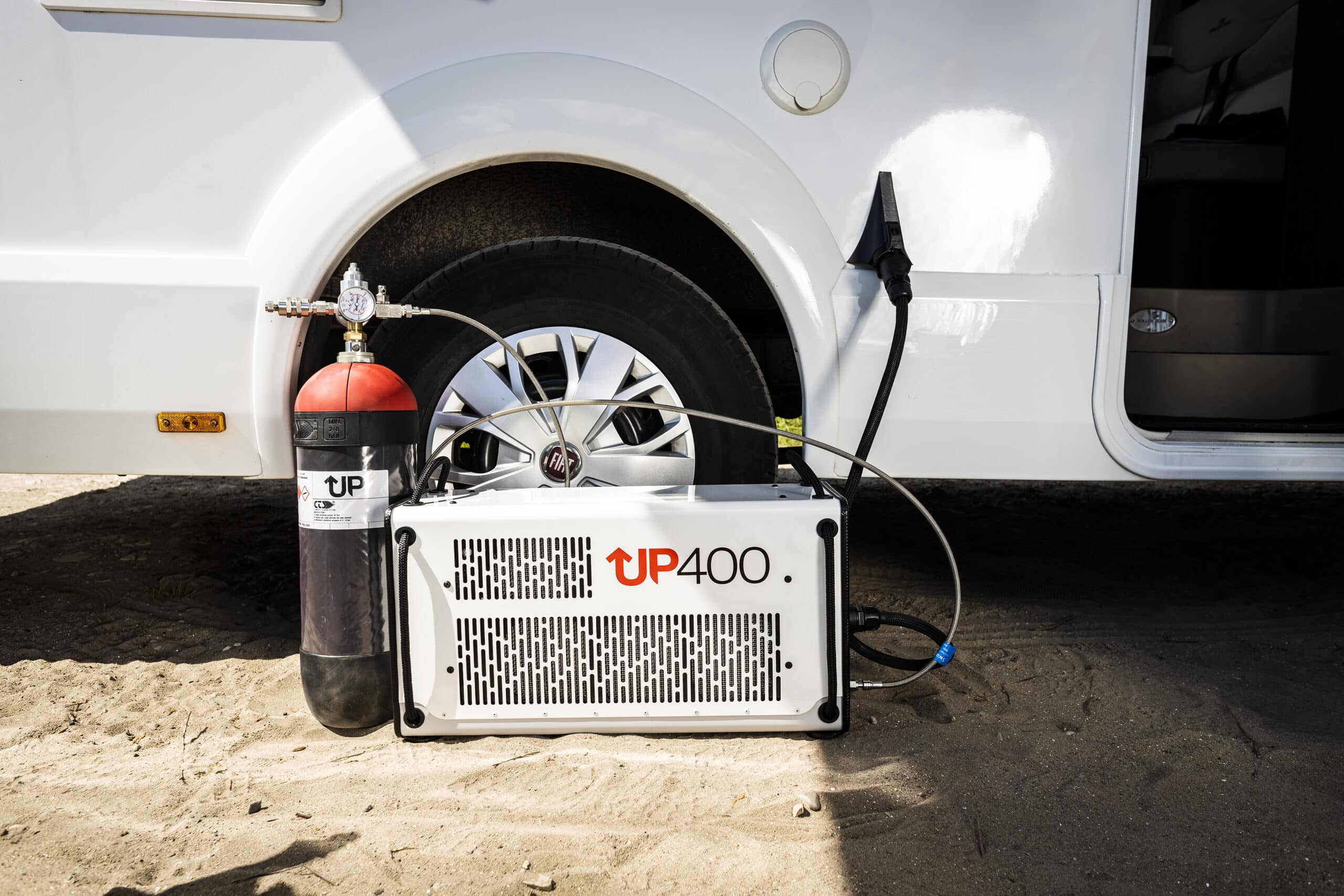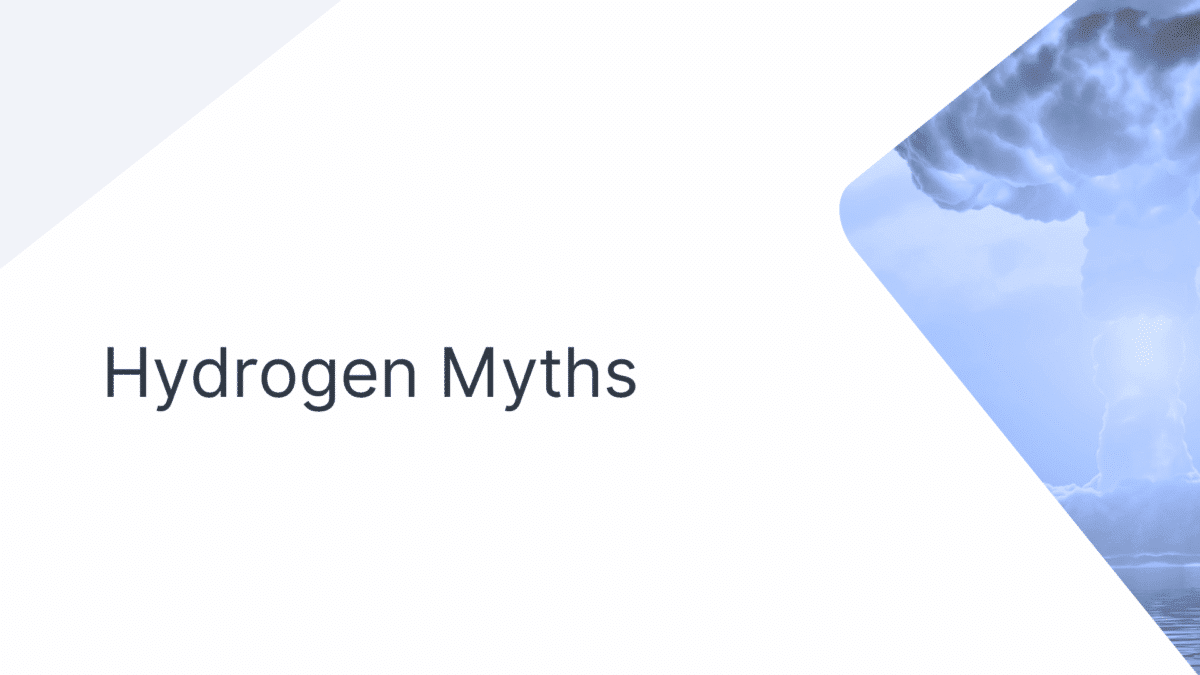
VIDEO: PowerUP Demonstrates Hydrogen Safety with Cylinder Experiments
November 15, 2023
Hydrogen: The Key to Unlocking Green Energy Microgrids
September 16, 2024Hydrogen Myths

As hydrogen fuel cells become increasingly prevalent, the consumer base they reach will expand. As with any new technology, some misconceptions and prejudices must be overcome to enable widespread use.
Because hydrogen is new for many consumers, there are prevailing myths surrounding its safety and viability. This article aims to dispel these myths by providing essential information and showing how hydrogen is, in fact, a safe energy source with its own distinct set of use cases.
As most articles about hydrogen power begin, the Hindenburg disaster will also serve as a jumping-off point. Many people have an image of fire ingrained in their minds, and it makes sense. The coverage of the disaster serves as the first (if not the only) exposure some people have to hydrogen.
Because hydrogen has, until now, taken a minimal role in the average person’s life, the effects of this scary first exposure tend to manifest as the misconception that HFC-powered cars are somehow more dangerous than petroleum-powered cars. Not only is the Hindenburg disaster a completely different scenario than modern applications, but it was almost certainly caused by other factors apart from hydrogen gas.
The dramatically improved safety of hydrogen is easily seen in how we store it. For instance, because it was used for lift, it had to be in a gaseous, uncompressed state to do its job; the Hindenburg stored it in massive bladders made from cow intestines. These containment vessels were soft, lightweight, and easily punctured.
Today, we no longer use hydrogen as a lifting gas, and virtually all applications require it to be stored in compressed or even liquid form. PowerUP’s fuel cells, for instance, use hydrogen stored in insulated, protected cylinders such as the ones tested here. As you can see in the test, when these cylinders are dropped, there are no leaks, and the liquid hydrogen is contained safely.

Of course, there are times in which hydrogen does escape accidentally. When any combustible fuel leaks, ignition is possible. Hydrogen is no different. However, these leaks are far more difficult to create. This is due to the incredible strength of containment vessels, which are often made from carbon fiber.
Because these cylinders used to store hydrogen are so strong, they require incredible amounts of force to cause them to fail catastrophically. When the cylinders do fail, they typically leak from a small point, and the hydrogen escapes rapidly. Here, what sets it apart from petroleum fuels is the same characteristic that makes it a valuable lifting gas: Its lightness. Hydrogen, whether it combusts or not, shoots off into the atmosphere.
According to Jacob Leachman, an associate professor at the University of Washington, it accelerates off into the atmosphere so quickly that it achieves escape velocity and leaves earth’s atmosphere entirely. When it does ignite, the flames still shoot straight up, and dissipate quickly.
This is important because it prevents the fire from fully engulfing whatever structure or vehicle the HFC is a part of. Gasoline, on the other hand, pools below whatever vessel was holding it, or trickles and spreads before easily catching and burning.
Though hydrogen is safer than you might expect, it is of course a dangerous substance, and should by no means be thought of as completely benign. Instead, it should be respected and handled safely in the same way fossil fuels are – this is a concept we have all been comfortable with for decades.
Unproven hydrogen? Not really
Another common myth is that it is “unproven”. This misconception is easily understood, as to the average consumer, hydrogen may seem like a totally new technology. After all, many consumers have never owned or driven an HFCV, or operated a device powered by a hydrogen fuel cell.
A little skepticism towards new tech is normal, healthy, and should even be encouraged. However, with HFC’s, the technology is anything but new. They have been on the world’s roads in some form or another since 1966 with the Chevrolet Electrovan, and many forklifts across the globe are powered by HFC’s.
Beyond automobiles, the HFC is used as a source of electricity in a much wider array of applications. They have been used as stationary generators for off-grid houses and infrastructure, in spacecraft such as the American Gemini missions, and even in small vehicles such as the currently available electric bicycles made by Pragma Mobility. These examples show not only the excellent scalability of the HFC, but the fact that they have been in use much longer than one might think, and without incident too.

Though this myth is less wide-spread, some think that hydrogen is not actually any better than fossil fuel based energy. It may be generated with a wide variety of methods, and these methods are color coded.
Green, blue, black, brown, turquoise, yellow and white are the most common designations for hydrogen generation processes. From electrolysis to gasification and methane pyrolysis, there are many routes by which to generate hydrogen gas. Some are better than others. The best, of course, uses renewable energy to create the gas, while the worst use fossil fuels without any form of carbon capture. The hard fact is that hydrogen gas requires energy to create, and that energy must come from somewhere.
As hydrogen becomes a more widespread source of energy, the generation of hydrogen gas will involve ever more renewable energy. The innovation has already occurred, there is only the implementation left to achieve.



